Contact
- For any questions regarding a Forum research project, please contact the project manager whose name is indicated on the page (see the “Project” section)
- For any questions regarding an event, one of our books or the valuation of a project, please contact Tom Dubois
- For press relations please, contact Véronique Wasa or consult our Press page
- To add an event to the calendar, please contact Thomas Evariste
- To submit a new book for the section "New in the library", please contact Thomas Evariste.
- For any other questions, please contact Sylvie Landriève

 Subscribe to the newsletter
Subscribe to the newsletter









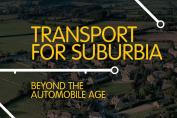
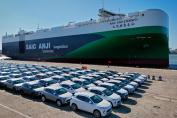




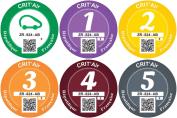




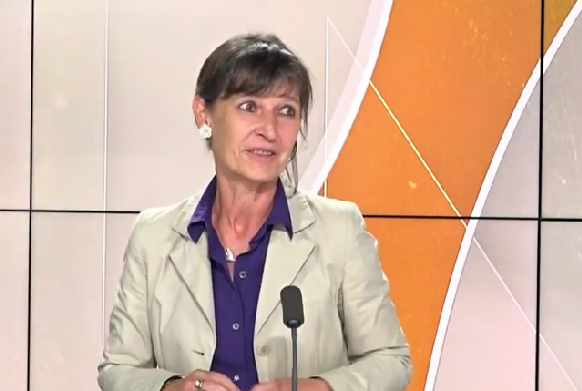







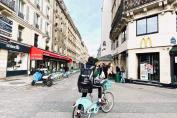





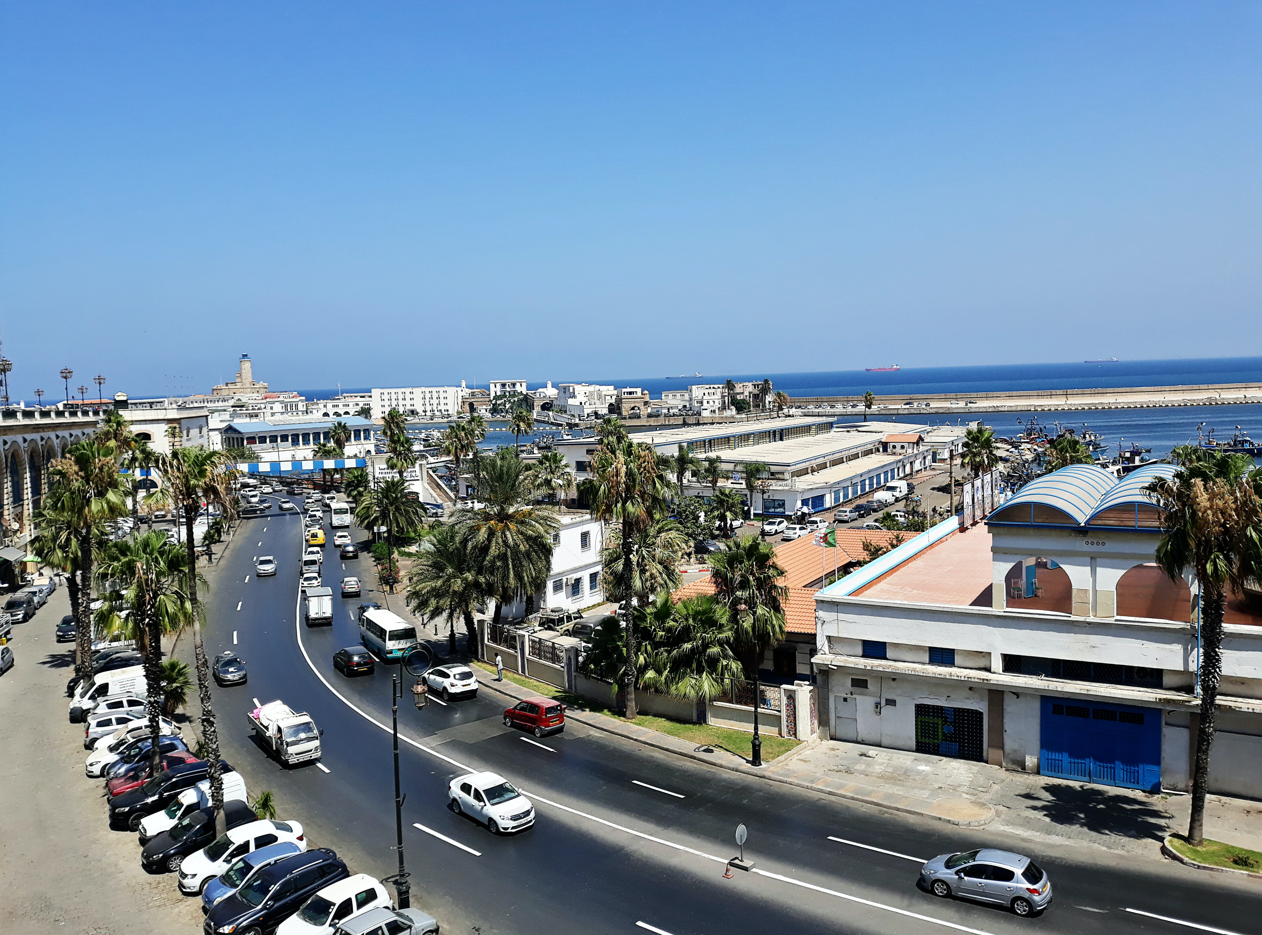
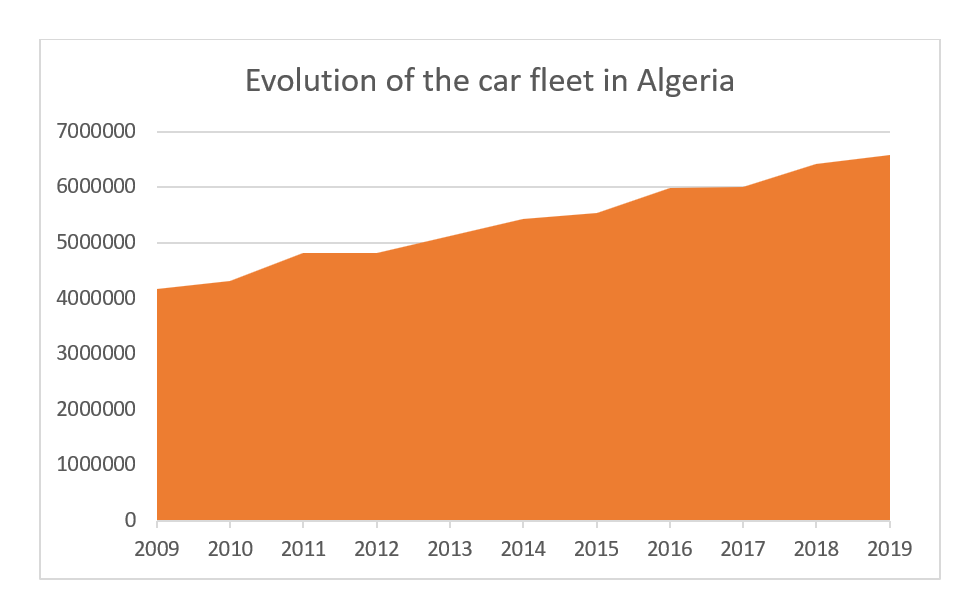 Figure 1: Evolution of the car fleet in Algeria between 2009 and 2019 (created by the author, source: www.ons.dz)
The automotive system finds itself at an impasse, caught between the imperative to address the escalating demand for vehicles and the economic and political pressures to curtail its expansion. This paradoxical scenario arises from a political will to diminish reliance on imports and reduce expenditure, especially as hydrocarbon prices began to decline in 2015. The subsequent measures implemented have directly impacted the automotive system and mobility at large. This creates tension between the imperative for ecological and mobility transitions and the population’s growing need for mobility, alongside national policies geared towards economic and industrial development. Mobility appears to vacillate between an exclusive focus on automobiles and faint hints of a sustainable transition struggling to materialise.
Figure 1: Evolution of the car fleet in Algeria between 2009 and 2019 (created by the author, source: www.ons.dz)
The automotive system finds itself at an impasse, caught between the imperative to address the escalating demand for vehicles and the economic and political pressures to curtail its expansion. This paradoxical scenario arises from a political will to diminish reliance on imports and reduce expenditure, especially as hydrocarbon prices began to decline in 2015. The subsequent measures implemented have directly impacted the automotive system and mobility at large. This creates tension between the imperative for ecological and mobility transitions and the population’s growing need for mobility, alongside national policies geared towards economic and industrial development. Mobility appears to vacillate between an exclusive focus on automobiles and faint hints of a sustainable transition struggling to materialise.
 Table 1: The road network in 2004[^5], Source: Les travaux publics en Algérie, Histoire et perspectives [Public Works in Algeria: History and Perspectives], Amcha, 2023.
Since 2005, several significant national and continental infrastructure initiatives have been launched, with the objective of steering territorial and economic development. Foremost among these is the East-West freeway (AEO), marking the largest undertaking in Algeria's history. Envisaged as an integral component of the national regional development plan, it spans approximately 1,216 kilometres and is conceived as part of the broader Maghreb unity highway corridor, projected to extend over 6,800 kilometres, ultimately connecting Nouakchott (Mauritania) to Tripoli (Libya) via Tunisia and Algeria (Amcha, 2023; COJAAL 2008). The final segment is projected to be completed by the end of 2023, and an additional east-west freeway, situated 200 km from the initial route, is planned in the High Plateaus.[^6] This freeway aims to link smaller towns nestled behind the Atlas Mountain ranges, which currently remain isolated and less accessible.
Table 1: The road network in 2004[^5], Source: Les travaux publics en Algérie, Histoire et perspectives [Public Works in Algeria: History and Perspectives], Amcha, 2023.
Since 2005, several significant national and continental infrastructure initiatives have been launched, with the objective of steering territorial and economic development. Foremost among these is the East-West freeway (AEO), marking the largest undertaking in Algeria's history. Envisaged as an integral component of the national regional development plan, it spans approximately 1,216 kilometres and is conceived as part of the broader Maghreb unity highway corridor, projected to extend over 6,800 kilometres, ultimately connecting Nouakchott (Mauritania) to Tripoli (Libya) via Tunisia and Algeria (Amcha, 2023; COJAAL 2008). The final segment is projected to be completed by the end of 2023, and an additional east-west freeway, situated 200 km from the initial route, is planned in the High Plateaus.[^6] This freeway aims to link smaller towns nestled behind the Atlas Mountain ranges, which currently remain isolated and less accessible.
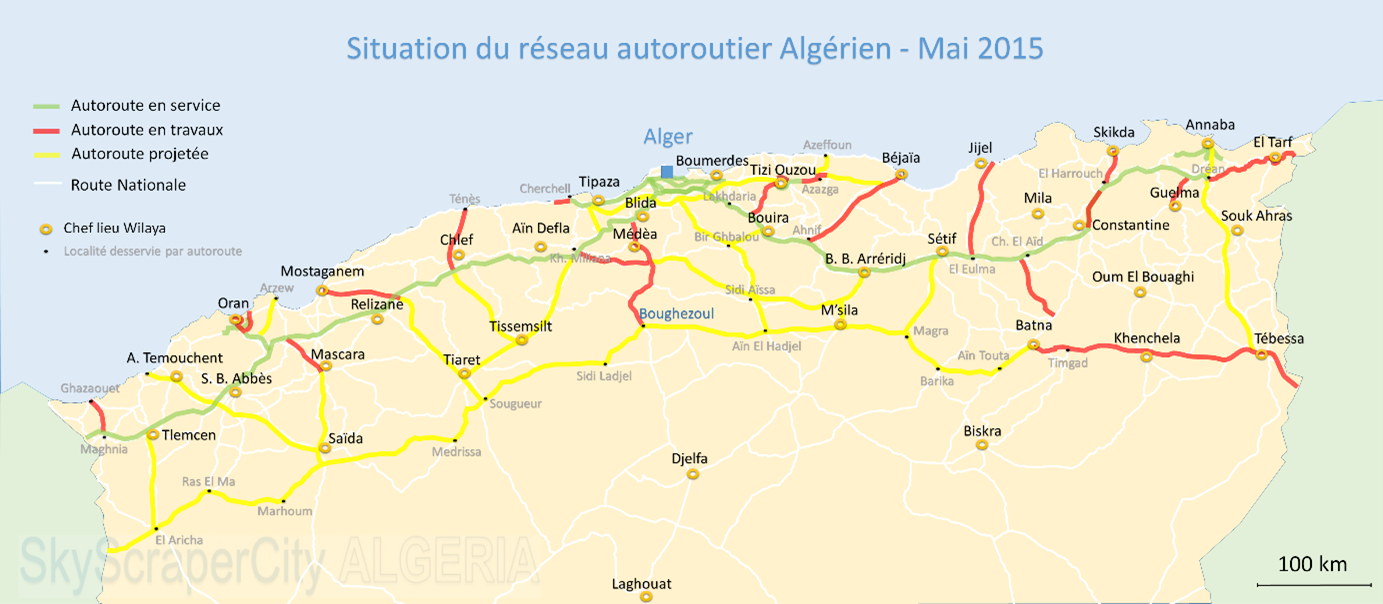
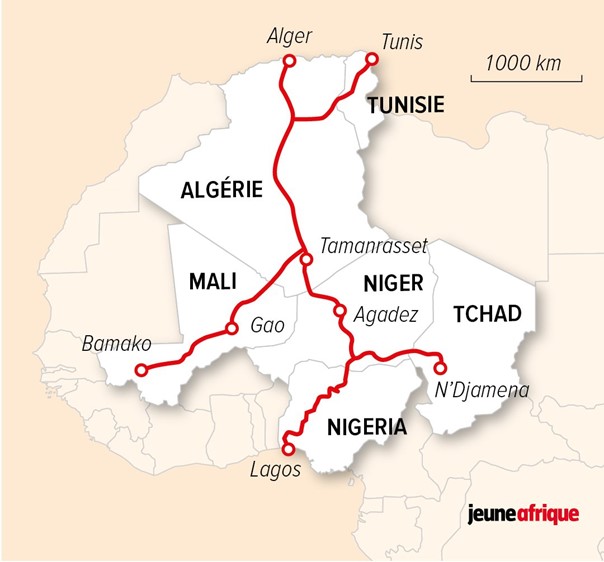
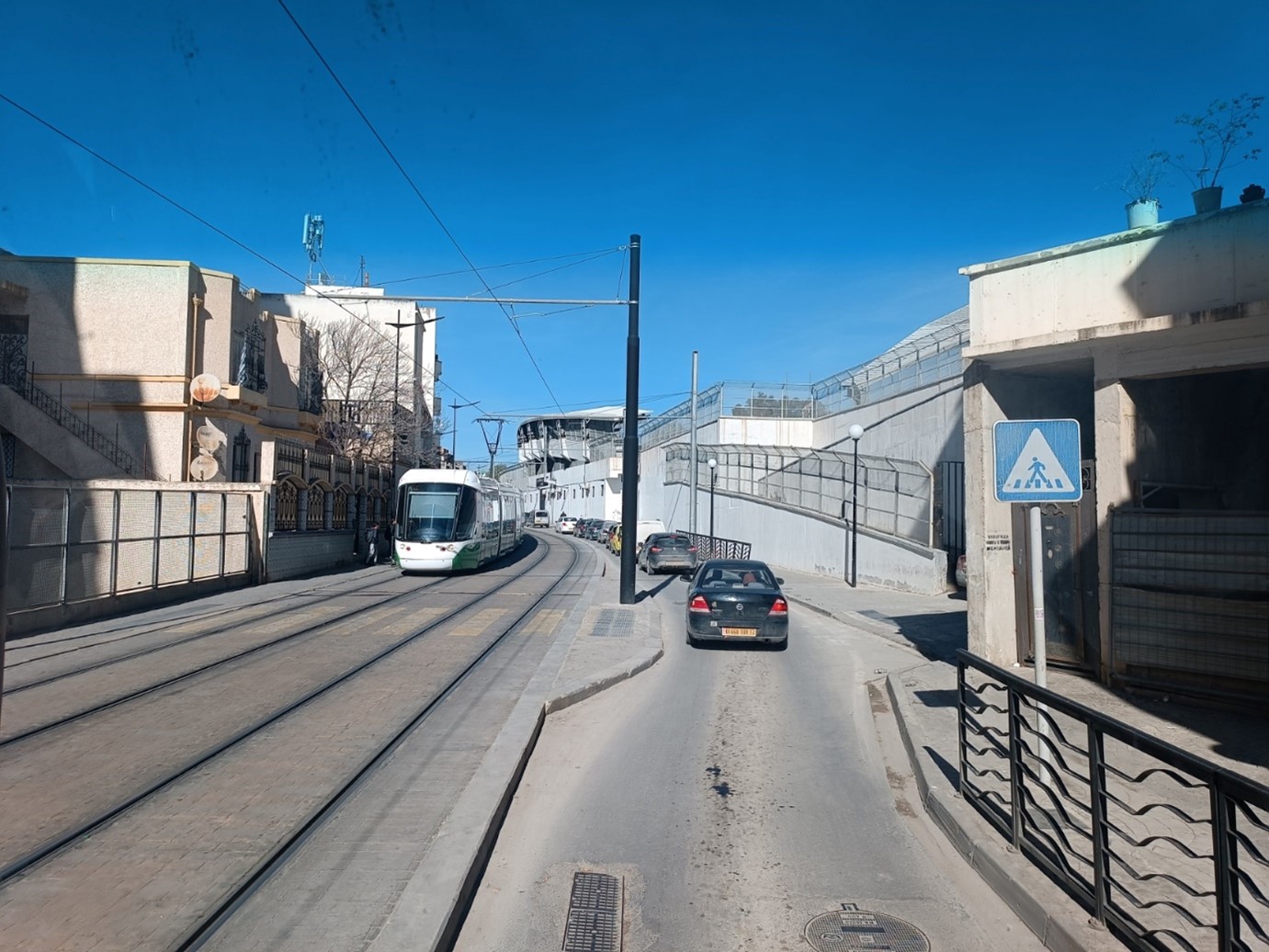 Figure 4: How the tramway and roadway in Constantine occupy public space to the detriment of pedestrians. Photograph by the author.
The dominance of the car system remains unchallenged[^20] . A household survey conducted for Algiers in 2004 by the Algiers metro company and BETUR revealed that "56% of journeys are made on foot, compared to 44% by motorised means, including: 65% by public transport, 29% by private car, and 6% by taxi" (Chibane, 2009). These statistics pertain specifically to Algiers, and obtaining recent data is challenging. However, we do know that, since 2009, the car fleet has expanded, with imports peaking in 2012, followed by local production and subsequent deceleration. The spatial organisation of cities has been altered by numerous housing projects on the outskirts and the expansion of the road network, resulting in new commuting practices between the outskirts and urban centres (Safar-Zitoun, 2020). Public transport, on the other hand, lags behind urban growth (Mezoued, 2019) and struggles to serve new residential and employment areas. There is reason to believe that the modal share of cars has increased and is likely to rise again once the situation is resolved.
Figure 4: How the tramway and roadway in Constantine occupy public space to the detriment of pedestrians. Photograph by the author.
The dominance of the car system remains unchallenged[^20] . A household survey conducted for Algiers in 2004 by the Algiers metro company and BETUR revealed that "56% of journeys are made on foot, compared to 44% by motorised means, including: 65% by public transport, 29% by private car, and 6% by taxi" (Chibane, 2009). These statistics pertain specifically to Algiers, and obtaining recent data is challenging. However, we do know that, since 2009, the car fleet has expanded, with imports peaking in 2012, followed by local production and subsequent deceleration. The spatial organisation of cities has been altered by numerous housing projects on the outskirts and the expansion of the road network, resulting in new commuting practices between the outskirts and urban centres (Safar-Zitoun, 2020). Public transport, on the other hand, lags behind urban growth (Mezoued, 2019) and struggles to serve new residential and employment areas. There is reason to believe that the modal share of cars has increased and is likely to rise again once the situation is resolved.




